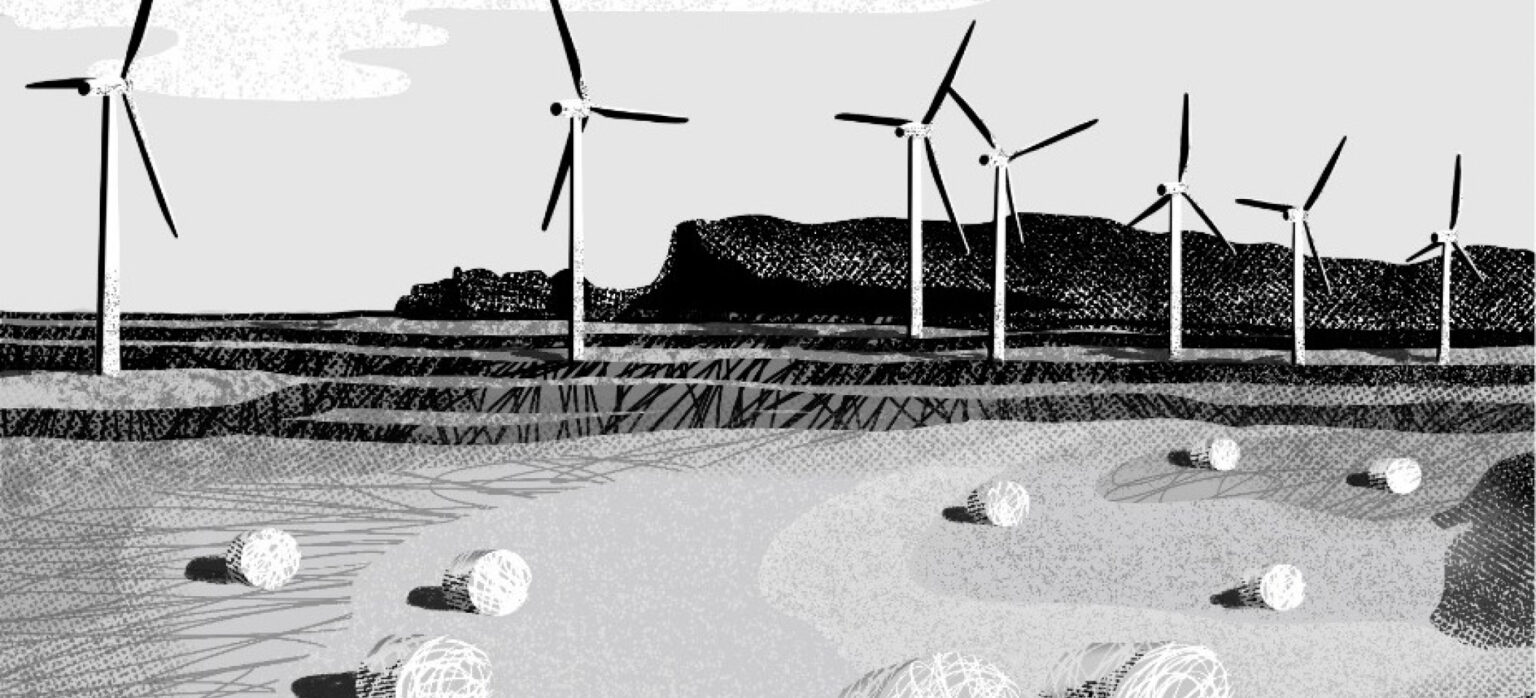How to Join Your Solar Project to the Alberta Grid
Grid Connection Defines the Project
For most renewable energy projects, the grid connection is the most significant and uncertain factor in terms of the budget and schedule. In Alberta, with its decentralized and complex electricity market, the grid ultimately determines the renewable project’s financial model and its bankability.
It is critical to understand early in the project’s life (a) how the transmission and distribution grids work; and (b) how and where the project could be connected cheaper and faster than any of its competition. These discussions need to take place well before the project team undertakes any land acquisition, siting, stakeholder engagement or financing work. All renewable project developers must be prepared to compete for valuable connection opportunities and move the connection process as fast as possible.
In this blog, we focus on solar generation connecting at the distribution level because due to its larger capacity wind usually requires robust transmission solutions. This blog explains how distribution systems work and what connection streams are available to different categories of solar projects in Alberta.
Transmission v. Distribution Systems
Alberta’s grid consists of transmission and distribution (above and below 25 kV, respectively) systems which are planned and operated by the system operator (AESO) and transmission/distribution facilities owners.
Alberta’s distribution systems are owned and operated by FortisAlberta (rural south), ATCO Electric (rural north), ENMAX (Calgary), EPCOR (Edmonton), Cities of Lethbridge and Medicine Hat, and Rural Electrification Associations (REAs). Each wire service provider has its own designated service area, connection process and requirements.
Solar projects under 20-25 MW can be connected on the distribution side, if there is a sufficient hosting capacity at the local substation and on the feeders in the project area (for instance, see the interactive hosting capacity map of FortisAlberta). If the existing hosting capacity is insufficient, the wire service provider is required to work with the TFO to obtain transmission system enhancements and upgrades (that will likely drive up the cost and result in delays to the solar project’s schedule).
Typically, the distribution interconnection facilities are cheaper and the connection process is less cumbersome and more expedient than that of the system operator responsible for transmission interconnections. As a result, the distribution connection space has tightened up and it is expected to remain competitive going forward. Accordingly, the project’s access to granular distribution-level information and its ability to effectively work with the wire service providers around their requirements is key to the successful grid connection.
Exclusive Right to Supply Power
In Alberta, wire service providers have the exclusive right to distribute power within their service areas. In practical terms, it means that the solar project can either self-supply (i.e. consume the electricity it produces) or provide power to the grid. There is no option to supply electricity directly to a third-party consumer, such as a landfill, feedlot or another commercial operation, to allow them to go off the grid. Although these parties may enter into a Power Purchase Agreement (PPA) with the solar project owner and operator, they still need to be tied to the distribution grid and pay all applicable charges under the distribution tariffs, which is the largest part of any electricity bill, whether commercial or residential.
There are some exemptions to this statutory monopoly of wire service providers, which may be granted by the Alberta Utilities Commission (AUC) in a limited set of circumstances, but it is unlikely that any of them would apply to a distribution connected solar project. We note here that all wire service providers take this statutory exclusivity to supply power in their service areas seriously and will defend it vigorously in the face of any threat to their province-wide monopoly.
Distribution Connection Options
There are two ways to connect to the distribution grid in Alberta: (1) as a regular distribution connected or DCG project; or (2) through a special program where the wire service provider needs to pre-qualify the project and confirm that it is eligible under the Regulations (Microgeneration, Community Generation and, the most recent addition, the Small Scale Generation).
A regular distribution-connected project may use renewable or non-renewable resources and can be connected up to the capacity limit specified by the wire service provider for the specific distribution infrastructure. Such projects have to run through a preliminary and detailed assessment by the wire service provider, which may take anywhere between three and six months, depending on the complexity of the project and its technical needs, and whether the transmission company needs to be involved (it may be), etc. All power plants above 1MW require an approval from the AUC.
The special connection programs are specifically designated under the Regulations to help renewable projects connecting on the distribution side (a) obtain some or all of the connection facilities at no charge; (b) self-supply power; (c) connect faster than other distribution projects; (d) connect without an AUC application; and (d) have the Balancing Pool trade energy on their behalf.
Special Distribution Connection Programs
There are three distinct connection streams for renewable projects, including solar, on the distribution side.
We are providing our Coles notes on each of these programs, including their pros and cons, below.
Microgeneration
- Key requirements: under 5 MW; must use renewable resources or alternative energy; full or partial self-supply to the customer’s site or adjacent sites; need to show existing load on site or future load additions (evidence showing that consumption will increase – e.g. municipal development permits or approved plans).
- Process: the wire service provider needs to qualify the project as microgen; no AUC application is required under 5MW (follow AUC Rule 007 only for participant involvement program).
- Benefits: metering costs ($50-60K) and metering data management are the responsibility of the wire service provider; some distribution upgrades may also be covered by the wire service provider; expedited connection process (1-3 months); not required to register with the AESO as a pool participant.
- Downsides: need to show sufficient load or planned load on site; cannot supply third parties or yourself at sites that are not adjacent to the project site; credit-based payment system administered by the wire service provider (credits applied to monthly bills, unused credits are paid out every 12 months – which means no cashflow for extended periods of time).
As of December 2020, there are 6,274 microgen solar sites in Alberta, with a total capacity of 89 MW. In contrast, there are only 2 distribution connected solar sites, with a total capacity of 5.6 MW.
Community Generation
- Key requirements: a community benefits agreement/statement involving an indigenous community, group or municipality (some paperwork is required to be filed to show partnership, no strict requirements as to the content); no self-supply needed.
- Process: the wire service provider and AUC need to qualify the project; an AUC application is required if above 1 MW.
- Benefits: the wire service provider installs and purchases the meter ($50-60K) and provides metering data management; the Balancing Pool will look after the energy trading and pays out monthly.
- Downsides: the project now has a third party (a not-for-profit, municipality or an indigenous group) which may add further complexity to the financing and sale process, if the developer is contemplating that option down the road.
The AUC recently approved a number of Community Generation projects involving municipalities, not-for-profits and indigenous partners – there are different ways to structure these arrangements and the Commission allows some flexibility to the parties on the commercial end to help launch meaningful and efficient community partnerships.
Small Scale Generation
- Key requirement: the project has to be within the existing hosting capacity on the substation and feeders that are located in the project area.
- Process: the wire service provider needs to qualify the project; an AUC application is required for anything above 1 MW.
- Benefits: assumption of a “zero dollars” offer to the power pool (it means that the block of electricity from the project is offered to the pool at $0 and it becomes a price-taker); the Balancing Pool acts as the market participant in dealing with the AESO (energy trading), including financial settlement matters; AESO pays the Balancing Pool based on the hourly price; the Balancing Pool pays to the market participant – less admin costs for the project; wire service provider must provide metering services and meter data manager services.
- Downsides: no meter purchase.
Most Appropriate Connection Stream
As discussed above, Microgeneration would work in a well-supported self-supply scenario (wire service providers review and verify the existing and planned load carefully and will reject any attempts to misuse the microgeneration program).
At the same time, Community Generation requires a reliable partner which may or may not be available to the project developer at the early stages when the connection application is being filed with the wire service provider.
Finally, the Small Scale Generation program is still fairly new and it remains to be seen how the wire service providers across the Province and the AUC interpret its eligibility requirements, including the “available hosting capacity” criteria in their service area, and whether it would work as intended and provide a fast track connection solution for solar generation in Alberta.







